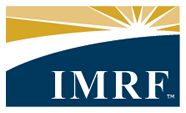Earning an IMRF Pension
Your IMRF pension gives you life-long income protection. You earn service credit toward a Tier 2 Regular Plan IMRF pension by:
- Working for an IMRF employer in an IMRF-eligible position
- Contributing 4.5% of your salary toward your future pension (up to the Tier 2 wage cap)
You will continue to earn service credit if you are on IMRF Disability or on an IMRF Benefit Protection Leave.
You must have at least 10 years of service credit to receive a future IMRF pension. This 10-year requirement can include reciprocal service. Once you have at least 10 years of service credit, you are guaranteed an IMRF pension for life. The more service credit you earn, the larger your pension will be.
Wage Caps
Under Tier 2, a member's wages are capped at $127,283.01 in 2025 and $129,192.26 in 2026. Your employer does not report any wages above the cap, and you do not pay any contributions on wages above the cap. The wage cap is also applied when IMRF calculates your benefits.
The wage cap increases each year by the lesser of 3%, or one-half of the increase in the Consumer Price Index-Urban (CPI-U) for the preceding September. If the CPI-U is zero, the wage cap is not increased.
Receiving an IMRF Pension
To begin receiving an IMRF Tier 2 Regular Plan pension, you:
- Must have at least 10 years of service credit (can include reciprocal retirement system service credit).
- Cannot be working in any position which qualifies for IMRF participation.
- Must be at least age 62.
Although you can retire as early as age 62, age 67 is your full retirement age. Your pension may be reduced if you retire before age 67, depending upon the amount of service credit you have.
| Amount Your Pension May Be Reduced | ||
|---|---|---|
| If you retire... | And you have... | Your pension will be reduced by... |
| Between age 62 and 67 | At least 10 years but less than 30 years of service credit | 1/2% for each month you are under age 67 |
| Between age 62 and 67 | At least 30 but less than 35 years of service credit | The lesser of:
|
| At age 62 or later | At least 35 years of service credit | No reduction. You will receive your full, unreduced pension |
| At age 67 or later | At least 10 years of service credit | No reduction. You will receive your full, unreduced pension |
Unused, unpaid sick days converted to service credit cannot be used to meet the 10-year requirement for a Regular Tier 2 pension or 35-year requirement for an unreduced pension under age 67.
How Much Will Your Pension Be?
The amount of your pension is based on your earnings and your service credit. To calculate the amount of your pension, IMRF uses a formula that includes:
- Your Final Rate of Earnings (FRE). Your FRE is your highest average earnings over a certain period of time.
- The total amount of your service credit
The formula to calculate a Tier 2 Regular Plan pension is:
- 1-2/3% of your FRE (up to the wage cap) for each of the first 15 years of service credit, plus
- 2% of your FRE(up to the wage cap) for each additional year of service credit over 15 years.
Your total pension at retirement cannot exceed 75% of your final rate of earnings.
Final Rate of Earnings (FRE)
Your highest average earnings will most likely come later in your IMRF career. If this is the case, the FRE used to calculate your pension will be your highest total earnings during any 96 consecutive months within your last 10 years of IMRF service, divided by 96. Usually, this is the average of the last 96 months of service.
Alternative FRE formula: Lifetime FRE
If you have higher earnings at the beginning of your career, an alternate FRE is used. The Lifetime FRE is an average of all your earnings (up to the wage cap) reported by all your IMRF employer(s) over your entire IMRF career.
When you retire, IMRF will calculate your FRE using both methods and will use the FRE that provides you with the larger pension.
Service Credit
Service credit is your total time under IMRF, stated in years and months.
Create Pension Estimates in Member Access
Use the Pension Estimator in your Member Access account to create your own pension estimates. You can customize your estimates using a variety of different situations, such as different ages at retirement, different amounts of future service credit you think you might earn, etc.
Annual Pension Increases
Annual increases begin whichever January first below is later:
- The January following your 67th birthday
- The January after you have received one year of benefit payments
Each January 1 increase will be calculated on your original benefit amount, and will be the lower of:
- 3%
- One-half of the increase in the Consumer Price Index (urban) for the preceding year. If the CPI decreases or is zero, no increase is paid.
Supplemental Benefit Payment ("13th Payment")
After you have retired and have received pension payments for at least 12 months in a row, you will be eligible for a supplemental benefit payment every July. When you first retire, you must have retired on or before June 30 to receive a 13th Payment the next year. For example:
| If you retire… | You will receive your first 13th Payment in… |
|---|---|
| On or before June 30, 2017 | July of 2018 |
| After June 30, 2017 | July of 2019 |
You will receive this supplemental payment with your usual July pension payment. The amount varies every year, but it will always be less than your monthly pension amount.


